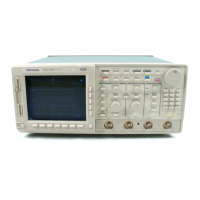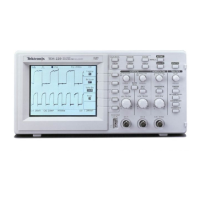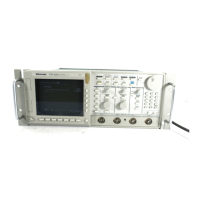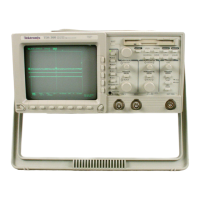TDS 500D, TDS 600B, & TDS 700D User Manual
B–1
Appendix B: Algorithms
The TDS Oscilloscope can take 25 automatic measurements. By knowing how it
makes these calculations, you may better understand how to use your oscillo-
scope and how to interpret your results.
Measurement Variables
The oscilloscope uses a variety of variables in its calculations. These include:
is the value used as the 100% level in measurements such as fall time and
rise time. For example, if you request the 10% to 90% rise time, then the
oscilloscope will calculate 10% and 90% as percentages with representing
100%.
is the value used as the 0% level in measurements such as fall time and rise
time.
The exact meaning of and depends on which of two calculation
methods you choose from the High-Low Setup item of the Measure menu.
These are Min-max and Histogram.
Min-Max Method — defines the 0% and the 100% waveform levels as the lowest
amplitude (most negative) and the highest amplitude (most positive) samples.
The min-max method is useful for measuring frequency, width, and period for
many types of signals. Min-max is sensitive to waveform ringing and spikes,
however, and does not always measure accurately rise time, fall time, overshoot,
and undershoot.
The min-max method calculates the High and Low values as follows:
=
and
=
High, Low

